Whether you use points or cash to book flights, there are always additional taxes and fees that you have to be aware of. Sometimes these additional costs can be nominal, and other times they can easily make up a large portion of the ticket price.
One example of the latter is the United Kingdom’s Air Passenger Duty (APD), which is a fee imposed on most passengers departing from the United Kingdom by air.
Let’s take a closer look at how and when the APD is applied, the difference in APD depending on flight length and cabin class, and what measures you can take to avoid or reduce these hefty additional costs.
In This Post
- What Is the UK Air Passenger Duty?
- Upcoming Changes to the UK Air Passenger Duty
- Do You Have to Pay UK Air Passenger Duty on Upgrades?
- Exemptions from the UK Air Passenger Duty
- Tips & Tricks to Avoid Paying UK Air Passenger Duty
- Conclusion
What Is the UK Air Passenger Duty?
Initially brought forth in 1994, the United Kingdom’s APD is a fee levied against plane operators for flights that depart from a UK airport. While there are some exceptions, the fee is charged per passenger.
When it began in 1994, the APD was set at £5 ($6.77 CAD) for intra-European flights, and £10 ($13.54 CAD) for long-haul flights. Since then, it has increased drastically, and has also become more complicated to understand.
Ultimately, the APD is passed on to the consumer, meaning that flights with APD fees are going to be more expensive than those without.
The amount you’ll have to pay is determined by two factors: the flight’s distance and the class of service you’re flying in. There’s a higher fee for longer flights than shorter flights, and the amount will also differ if you’re in economy, premium economy, business class, or First Class.
Plus, you’ll pay the highest rate on large planes that are designed to carry few passengers.
The flight distance is calculated by measuring the miles between London and the destination country’s capital city.
There are currently four bands, broken down as follows:
- Domestic Band: destinations in England, Scotland, Wales, and Northern Ireland
- Band A: 0–2,000 miles
- Band B: 2,001–5,500 miles
- Band C: 5,500+ miles
As a reminder, the distance is calculated as being between London and the capital city of the destination country, rather than being calculated based on the distance between your departure airport and your final destination airport.
Therefore, if you were to begin a trip in the UK with a destination of Hawaii, despite the fact that Hawaii is over 7,000 miles from London, you’ll still fall in Band B. This is because the capital city of the United States is Washington DC, which is less than 5,500 miles from London.
The current UK APD rates as of April 1, 2025 are as follows:
If you’re flying on a direct flight, it’s rather easy to calculate your distance to determine if you’re in Band A, Band B, or Band C. You simply look up the flight distance in miles between London and the capital city of your destination country, perhaps by using Great Circle Mapper.
If it’s under 2,000 miles, you’ll be in Band A, if it’s over 2,000 miles but under 5,500 miles, you’ll fall into Band B, and anything more will be in Band C.
Connecting Flights Departing from the UK
Where things get more complicated is if you have a connecting flight. Even if your initial flight departing from the UK is under 2,000 miles, but you have a layover and continue to a further destination that brings your total distance to over 2,000 miles but less than 5,500 miles, you’ll still fall under Band B, and therefore be charged a higher APD.
For example, flying from London to Paris has a distance of less than 2,000 miles, putting you comfortably in Band A. Now, if you were to have a layover shorter than 24 hours in Paris and continue onward to New York, putting you at well over 2,000 miles, you’d fall under Band B.
The result is that you have to pay significantly more taxes and fees, even though the long-haul flight is originating from a destination outside of the UK.
Connecting Flights Through the UK
For international connections through the UK, APD is applicable on the whole journey only if the stop is greater than 24 hours.
So, if you were to fly from New York to Paris with a layover in London, you won’t have to pay any APD if that layover is less than 24 hours. If it’s a stopover of more than 24 hours, you’ll be subject to APD in the Band A rate.
On the way back to New York, flying from Paris through London, you also won’t be charged APD if the layover is less than 24 hours; however, if it’s a stop of more than 24 hours, then APD is applicable at the Band B rate, as it’s calculated on the distance from London to New York.
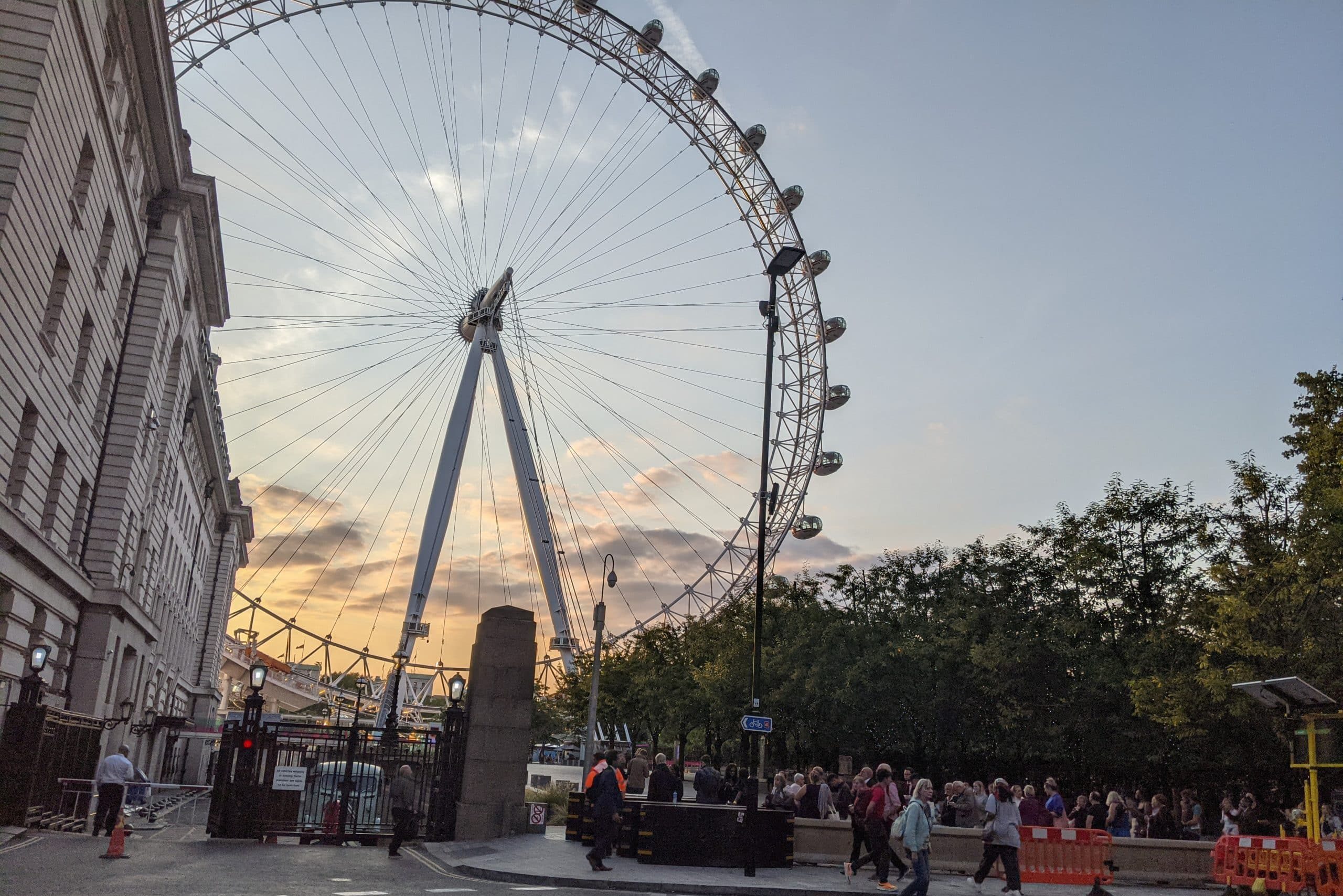
Upcoming Changes to the UK Air Passenger Duty
Effective April 1, 2026, there will be changes to the UK APD fee structure once again.
In every case, the price is rising, though the increases are much more substantial in the Standard Rate and Higher Rate categories.
While these increases may not seem like much, the UK APD fee is in addition to carrier-imposed surcharges and other applicable taxes.
Note that it’s also imposed on bookings made with points.
Do You Have to Pay UK Air Passenger Duty on Upgrades?
If you pay outright for an upgrade to a higher class of service after booking your original seat in economy class on a flight that’s subject to APD, then you’d have to pay additional APD as a result.
However, if you were to receive a free upgrade from the airline or redeem non-monetary instruments for an upgrade, then you wouldn’t have to pay additional APD for that upgrade.
Therefore, if you have Aeroplan Elite Status with Air Canada and access to eUpgrades, you can avert the pricier APD of a business class fare by booking an economy fare and applying eUpgrades.
As long as your eUpgrade is confirmed either in advance or by waitlisting, you’ll enjoy a higher class of service while not incurring any additional taxes or fees.
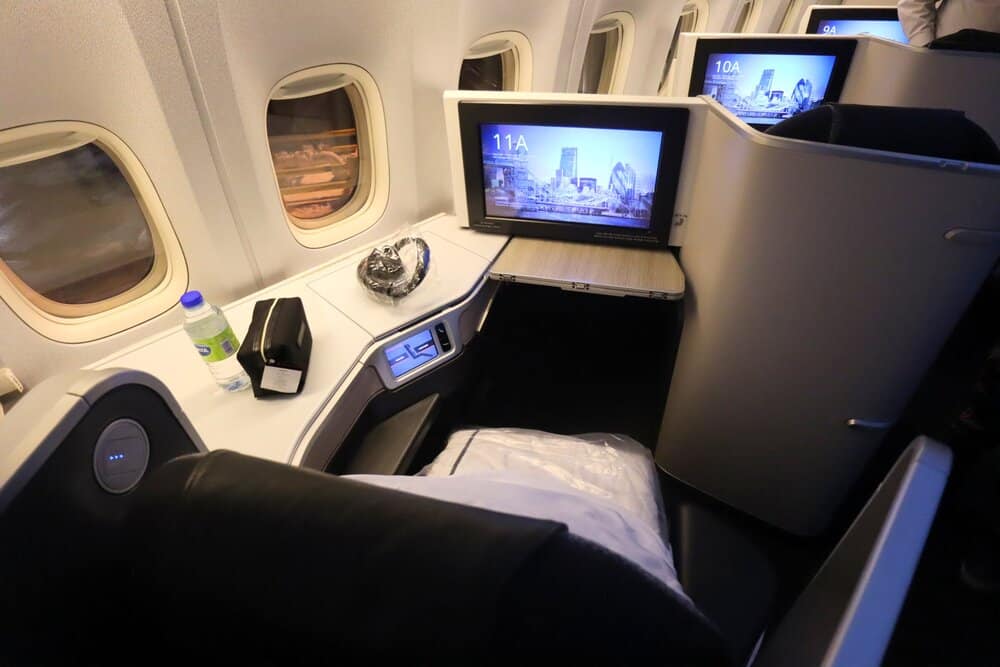
Exemptions from the UK Air Passenger Duty
Children under 16 as of the date of the flight are exempt from paying APD, but only if they’re flying in economy.
Children under two are exempt from paying APD across all cabin classes, as long as they don’t have their own seat. If they do have their own seat, then they’ll only be exempt from paying APD if they’re in economy class.
If your departing flight is from the Scottish Highlands and surrounding islands, you’ll be exempt from paying the APD. This is even the case if you’re connecting through an airport in another region of the UK.
Similarly, if you’re departing from Northern Ireland, you won’t have to pay any APD if you have a direct flight to a destination that falls outside of Band A.
It’s worth noting that this has very little real-life implications, though, as there aren’t many flights that’d qualify.
If Northern Ireland ever has a direct flight across the Atlantic, then this could be an option to avoid paying APD. Note that the flight has to be direct, so a flight leaving Northern Ireland with a layover in London wouldn’t be eligible for the exemption.
There are other exemptions related to travellers carrying out certain duties, flying for statutory obligations, and other specific circumstances.
Tips & Tricks to Avoid Paying UK Air Passenger Duty
The APD can be quite costly if you have any upcoming trips that involve the UK. The good news is that there are some ways you can reduce and, in some cases, avoid APD altogether, without having to completely avoid the UK.
First off, if you’re flying out of the UK, then APD can’t be avoided, but can still be significantly reduced. If you’re departing from London, then one way to reduce your APD rate is to originate your international trip from Inverness in the Scottish Highlands instead of from London.
The 90-minute positioning flight from London to Inverness would still incur APD; however, these one-way flights are available for around $60 (CAD) all-in.
So, instead of paying the extra APD of $166 (CAD) for economy or $398 (CAD) for a non-economy fare, you’d only have to pay $60 (CAD) extra for the flight to Inverness, and you’d be able to explore the beautiful Scottish Highlands.
Note that your flight from Inverness to your final destination has to be on the same ticket. If you fly from Inverness to London and then onwards on a separate ticket, then you’ll still have to pay APD, even if your layover in London is less than 24 hours.
Similarly, you can reposition yourself elsewhere in Europe with a cheaper flight from London – say, by redeeming Avios for a short-haul British Airways flight – before continuing your journey onwards.
Instead of flying, another option is to take the train from London to Paris, through the Channel Tunnel. Despite the distance, a train from London to Paris is only 2.5 hours, and can cost less than a flight from London to Paris, which would incur APD costs.
From there, you can fly from Paris to your final destination, thereby avoiding the UK APD altogether.

If you have an international connection in the UK, make sure it’s less than 24 hours to avoid the APD. London can be a great place to visit on a long layover, but the difference between a 19-hour layover and a 27-hour stopover can be quite costly.
Lastly, even though you pay APD at the time of booking, it’s not payable if you don’t actually fly. So, with that in mind, in the event that you’re unable to make your flight, but you’re outside of the cancellation window, you may still be able to get a refund on the APD you paid.
Note that you’d have to contact your airline to inquire about the APD refund, and you may have to pay additional administrative fees.
Conclusion
The Air Passenger Duty (APD) is a costly surcharge that can make flights to and from the UK quite expensive, especially if you were hoping to score a cheaper flight by redeeming points.
Fortunately, there are ways to reduce or even avoid the APD, without having to scrap the UK from your travel plans altogether.
Long layovers, positioning flights, or redeeming eUpgrades for Air Canada business class are all great ways to make sure that you’re getting the most for the least on your next trip across the pond.



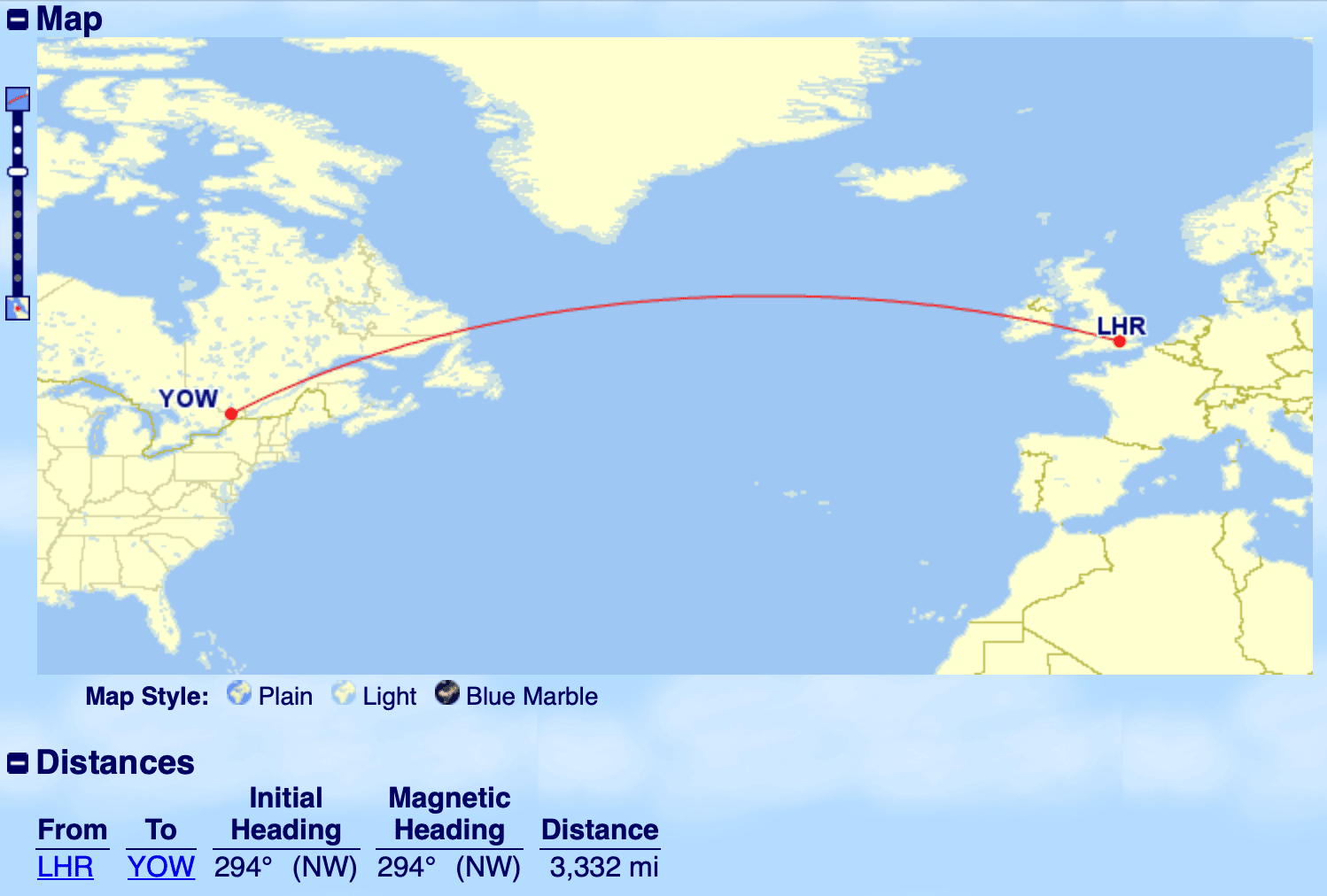
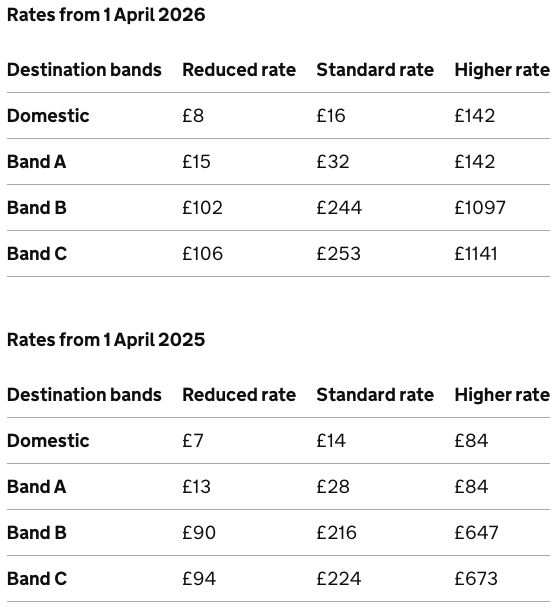



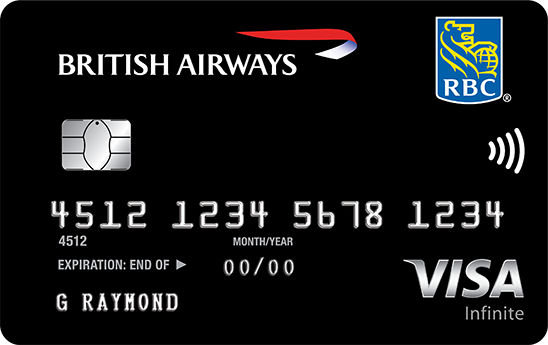









Just e-upgraded LHR – YVR from Economy Flex to Business and paid the standard $200 fee. When I looking at my e-upgrade receipt, I noticed $182.10 of that fee was applied to APD. Poor AC is losing out here! 🙂
If they’re trying to pass it off as an environmental tax, they’re going around it exactly the wrong way. Since the UK has an excellent rail network, flying within the UK should result incur the highest rate. Since there aren’t any alternatives to transcontinental flying, that should incur the lowest rate. The way it’s implemented, they only succeed in driving business away from their airports, as people in the know will travel to somewhere outside of the UK and fly from there.
(As I did in my last trip – after a wonderful two-week trip in the UK, I took the ferry to Dublin and flew home from there. The cost of the ferry + the hotel for a night added up to less than what the UK Passenger Tax would have cost me!)
I really enjoy reading your thoughtful and unique article. Thanks for sharing. Keep it up.